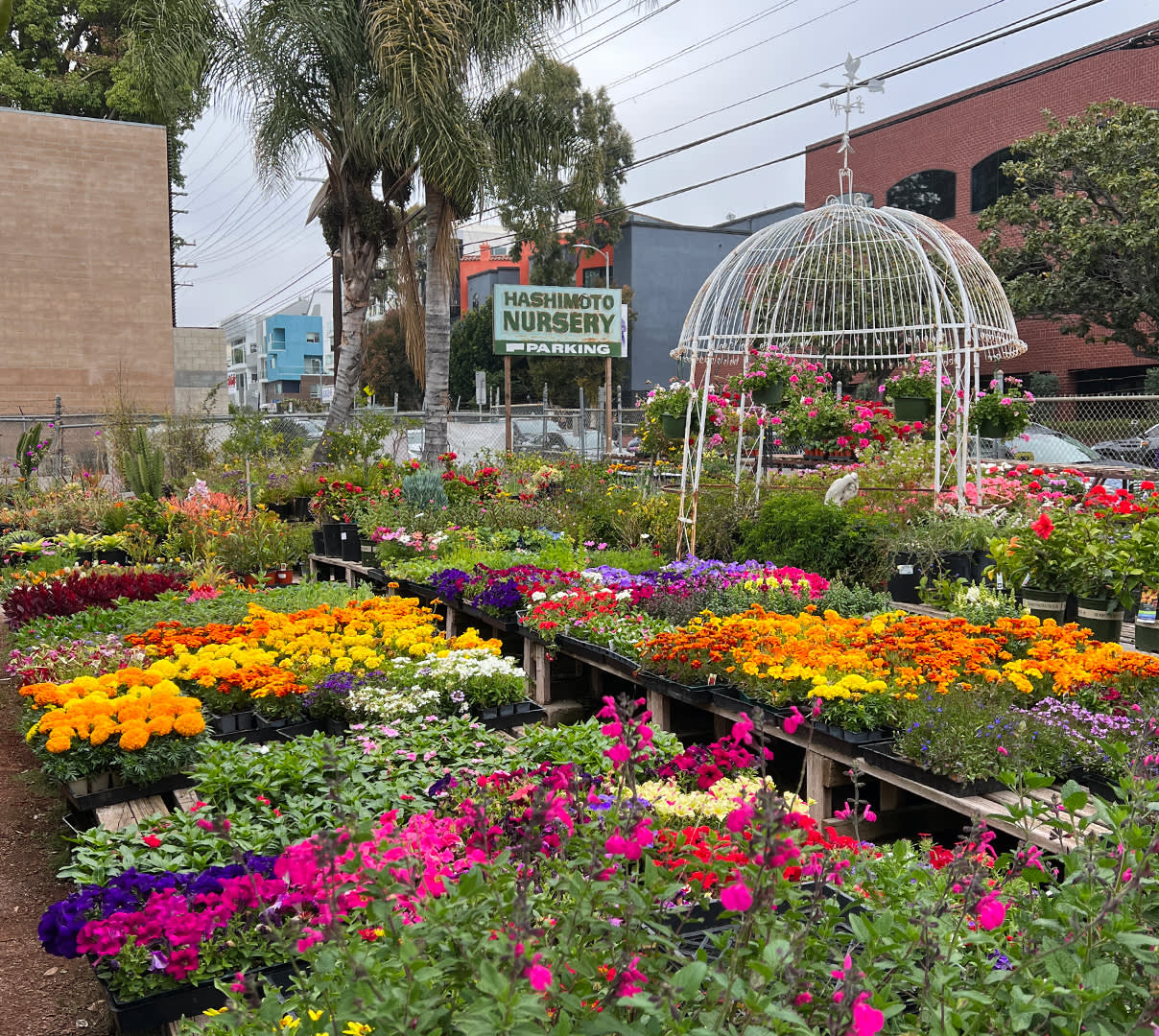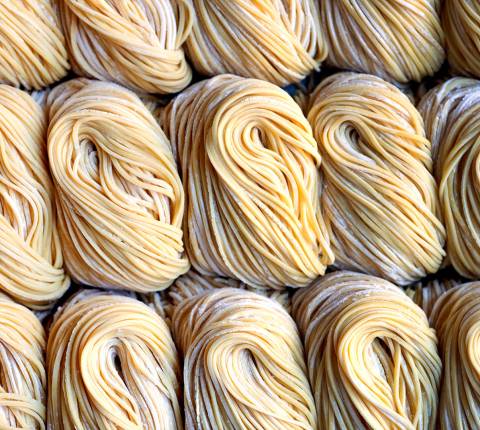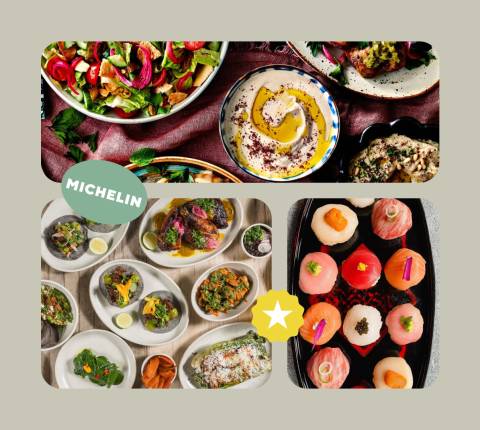In West Los Angeles running parallel to the 405, there’s a small neighborhood with a mix of old single-story buildings, new developments, and strip malls with deep historical and cultural roots. It’s also one of the city’s most celebrated food destinations.
Officially designated by the city of Los Angeles as “Sawtelle Japantown” in 2015, the area formerly known as “Little Osaka” might not impress size-wise, especially when compared to the city’s mile-wide Koreatown, Chinatown, and Little Tokyo neighborhoods. At just two blocks east to west and four blocks north to south between Olympic and Nebraska, Sawtelle Japantown is just a short walk along Sawtelle Boulevard — but it is a flavor-filled legacy walk that’s home to one of the city’s most enduring and beloved cultural communities.
Deep Roots
Sawtelle existed as its own city from 1899 to 1922, at which point it became part of greater Los Angeles, according to KCET. It was between these years that the first waves of Issei or Japanese immigrants moved into Sawtelle because surrounding neighborhoods like Brentwood, Bel-Air, and Westwood had strict housing covenants preventing many Japanese and other people of color from moving in. The lack of restrictions for less-developed Sawtelle meant it became a bustling hub for the Japanese immigrant community, which ended up building the neighborhood itself.
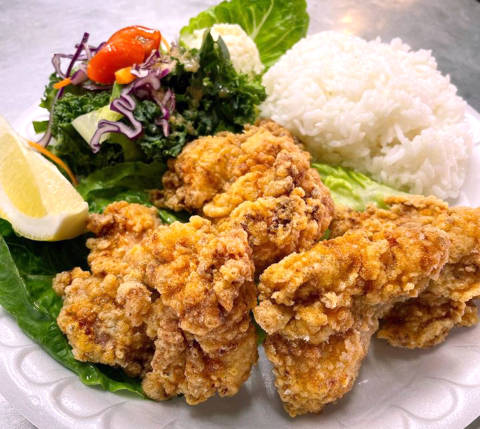
Near the northern end of the Sawtelle strip, tucked behind a couple of tables with standing umbrellas and beneath a green-and-orange-striped awning, is an unassuming storefront that looks like it hasn’t been touched since the 1940s … because it hasn’t. Inside is Tempura House, a Japanese restaurant and historical mainstay that’s been going strong since 1949. Here the tables are scarce and the food is served on styrofoam plates, and that’s exactly how people like it: old-school and boldly free of frills.
“Some customers still know this restaurant from long ago,” says Taro Yamanoha, an Okinawa native who has managed Tempura House for the past few years. “We want to keep the legacy going and run the business as long as we can,” he says.
Tempura House’s founding came only a few years after the end of the era of mass detainment and incarceration of Japanese Americans post–World War II. The restaurant is a living testament of Sawtelle Japanese families’ getting a foothold of normalcy after this traumatic period.
Today’s Sawtelle is a mix of tradition and innovation. For example, though its ownership and menu have changed several times throughout its many decades-long operations, Tempura House has always strictly adhered to traditional Japanese cooking.
As a first-generation Japanese immigrant himself, an Issei, Yamanoha likes being part of a community that has a connection to home. At Tempura House, he gets to share traditional, non-Americanized Japanese dishes like salty-sweet, deep-fried karaage chicken and tender beef sukiyaki served with rice and vegetables.
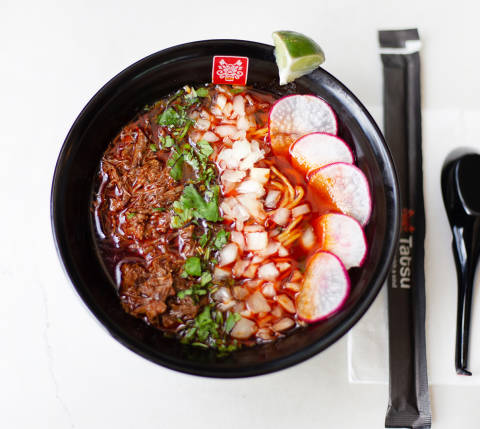
Tatsu Ramen, on the other hand, has operated on the southern end of the Sawtelle strip for 12 years and offers a more modern dining experience; think sleek interior design and culture- creations. One of the restaurant’s ramen dishes growing in popularity is the Birria Bowl, a twist of Japanese and Mexican flavors with adobo-marinated beef atop ramen noodles.
“It feels exciting,” says Luis Conde, Tatsu Ramen’s manager. “You’re kind of anxious or nervous to see how the day will turn out. The thing about Sawtelle is that the customers are so diverse. It makes our day go smoothly. It gives us that little extra push to go to work.”
Navigating Your Way on the Grand Buffet
Perhaps Sawtelle’s most incredible attribute is how walkable it is, because let’s face it: Los Angeles is known for many wonderful things, but it’s not exactly top of the list for most amblers and walkaholics. Sawtelle gets so much foot traffic, it can be jarring for first-time visitors and even some locals to descend upon Sawtelle Japantown during lunchtime and find the area teeming with hungry people crisscrossing the boulevard.
“This is a culture that everyone wants to experience," says Conde as a way to explain the uncommon vibe in car-centric LA Chinatown has foot traffic too, but because Sawtelle is a concentrated strip of four blocks, all the action is in one place — and most of it is food-related. “Everyone wants a piece of that shine to show people what they can offer,” Conde says.
Turning onto Sawtelle, the feeling of excitement immediately begins to build. It’s almost like being at the entrance of a county fair. But for the Sawtelle diner who may not have time for every ride, the FOMO runs high. There are so many fantastic restaurant options to pick from that the burden of making a choice can be overwhelming.
To get your sushi fix, there’s SushiStop, the Kura Revolving Sushi Bar, and Hide (pronounced “hee-day”), a family favorite that has been in operation since 1979 and still won’t take any reservations.
If noodles are desired, there’s the thick umami-rich udon served in a savory broth at Marugame Udon; the thin, fresh buckwheat Soba noodles of Kaz The Soba Place; the distinctive curry noodles of Menya Tigre; and the Shanghai-based flavors of Tasty Noodle House.
Ramen is another dish that dominates all up and down the strip: from Tatsu Ramen, home of the famous Bold Ramen with slow-cooked Tonkotsu pork broth, to Tatsu’s neighbors, Tsujita LA Artisan Noodle, its sister restaurant, the Tsujita LA Artisan Noodle Annex (thicker noodles!), and the more traditional Killer Noodles.
For a warm and belly-filling entree, FuRaiBo, which has over 100 locations in Japan but only two in Southern California, serves its famous chicken wings cooked to a crisp in peanut oil. There’s also Chinchikurin, a restaurant that specializes in Hiroshima-style okonomiyaki, hearty cabbage- and batter-based pancakes that first originated as a staple street food in post-war Japan.
The Sawtelle strip is not exclusive to Japanese restaurants. Other Asian cultures have a home here too. Representing Korean cuisine, there’s Tofu Ya and Seoul House of Tofu. Meanwhile, there’s a pair of restaurants offering Filipino plates: Big Boi, known for its Filipino comfort food and jars of in-house specialty butters (ube, buko pandan, ensaymada), and Spoon and Pork, which originally started out as a food truck before going brick-and-mortar.
This being Los Angeles, there are also a few Mexican restaurants, notably Sonoritas Prime Tacos, home to the beloved Mar y Terra Burrito, featuring a mix of Angus beef and spicy shrimp, and Bar Hermanito which acknowledges its neighbors by offering Japanese-style tacos and sake.
"I feel like everybody here is like a big family,” Conde says. “We all look out for each other. And we don't get bored of eating the same food because we get to experience and taste everybody else’s food.”
Adds Yamanoha, "I'm so proud to be part of this small community, and I hope to help to expand this community even more in the future."
Photo credits:
Hashimoto Nursery
Tatsu Ramen by Dathias Godfrey
Courtesy of Tempura House


